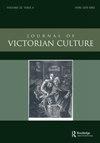Remembering Hodson’s Horse: Commemoration and the Indian Uprising of 1857–58
IF 0.2
3区 历史学
Q2 HISTORY
引用次数: 0
Abstract
This article presents analysis of the memorial to William Hodson in Lichfield Cathedral, designed by George Edmund Street between 1859 and 1862, focusing on the iconography of the monument and way that it was influenced by Muscular Christianity and ecclesiology. The attitude of Hodson and his brother George Hodson, who commissioned the monument, is examined through analysis of the publication that presented Hodson’s career to the Victorian public: Twelve Years of a Soldier’s Life in India (1859). The memorial raises urgent questions about the future of Victorian cultural heritage as it demonstrably misrepresents a highly symbolic event within British imperial history. Hodson was represented as a hero by Victorian ecclesiologists but is now seen by many as an unscrupulous and ruthless imperialist. This paper will demonstrate that the extraordinary form of the tomb was determined by an alteration to the design: the inclusion of a sculptural panel representing the ‘Surrender of the King of Delhi’. This change was instigated by the committee of the Ecclesiological Society headed by A. J. Beresford Hope. The panel turns a relatively peripheral event into a symbolic tableau: the surrender of Indian Islam to British Christianity, a distortion typical of British culture in the aftermath of the Indian Uprising of 1857–1858. The historiography of Hodson’s career shows that the tomb has acted as a focus for those wishing to perpetuate a conservative interpretation of Hodson’s career.纪念霍德森的马:纪念和1857-58年印度起义
本文分析了1859年至1862年间由乔治·埃德蒙·斯特里特设计的利奇菲尔德大教堂的威廉·霍德森纪念碑,重点介绍了纪念碑的图像学以及它受到肌肉基督教和教会学的影响。霍德森和他委托建造这座纪念碑的兄弟乔治·霍德森的态度,是通过分析向维多利亚时代公众介绍霍德森职业生涯的出版物《印度士兵生活的十二年》(1859年)来检验的。这座纪念碑对维多利亚文化遗产的未来提出了紧迫的问题,因为它显然歪曲了英国帝国历史上一个极具象征意义的事件。霍德森曾被维多利亚时代的教会学家视为英雄,但现在被许多人视为肆无忌惮、冷酷无情的帝国主义者。这篇论文将证明,陵墓的非凡形式是由对设计的修改决定的:包括一块代表“德里国王投降”的雕塑面板。这一变化是由A·J·贝雷斯福德·霍普领导的教会学会委员会发起的。该小组将一个相对次要的事件变成了一个象征性的画面:印度伊斯兰教向英国基督教投降,这是1857-1858年印度起义后英国文化的典型扭曲。对霍德森职业生涯的史学研究表明,对于那些希望对霍德森的职业生涯进行保守解读的人来说,这座坟墓是一个焦点。
本文章由计算机程序翻译,如有差异,请以英文原文为准。
求助全文
约1分钟内获得全文
求助全文

 求助内容:
求助内容: 应助结果提醒方式:
应助结果提醒方式:


